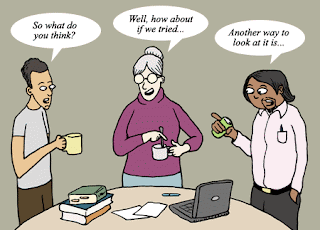There is no size limitation but it must not be large. The principles followed in establishing a QC are as below:
Ideas in setting up a QC
- Draw members from cross functional groups (preferably people doing similar work)
- Schedule meetings for once a week or once in two weeks at most
- Ensure membership is voluntary
- Make the meetings compulsory
- The QC members should be trained by an expert on the conduct of a QC and problem solving skills
- There should be a pool of problems to be resolved by the QC
- There should be a steering committee for the QC to report to
In a QC meeting, the following occur:
- Identification of a problem to discuss
- Getting deeper information about the problem from the process owner so that members can understand
- Brainstorming and analyzing the problems using tools like Ishikawa Diagram, Affinity diagram and other brainstorming tools
- Agreeing and making recommendations for implementation
- Sending the recommendation to the relevant approving authority.
- It is a very effective means of solving organization's problems
- It may be more cost effective than outsourcing
- It facilitates organizational learning from understanding the cause of problems and resolving them by staff or the organization.
- It aids the personal development of QC members
- It promotes team work
- It promotes satisfaction of volunteers
- It facilitates continuous improvement
Sample list of pool of problems for a QC
- Reduction of material wastage in a process
- Reduction of processing time (TAT)
- Improvement in customer satisfaction
- Reduction in lead time of a project delivery date
- Resolution of a repetitive audit non conformance
- Resolution of a recurring problem in the production process
- Resolution of a recurring customer complaints
You don't have to wait to have big organization to establish one, you should start today to enjoy the potency of this powerful tool. I will be your collaborator in making this happen for your organization - mail me at titus@profficio.com








